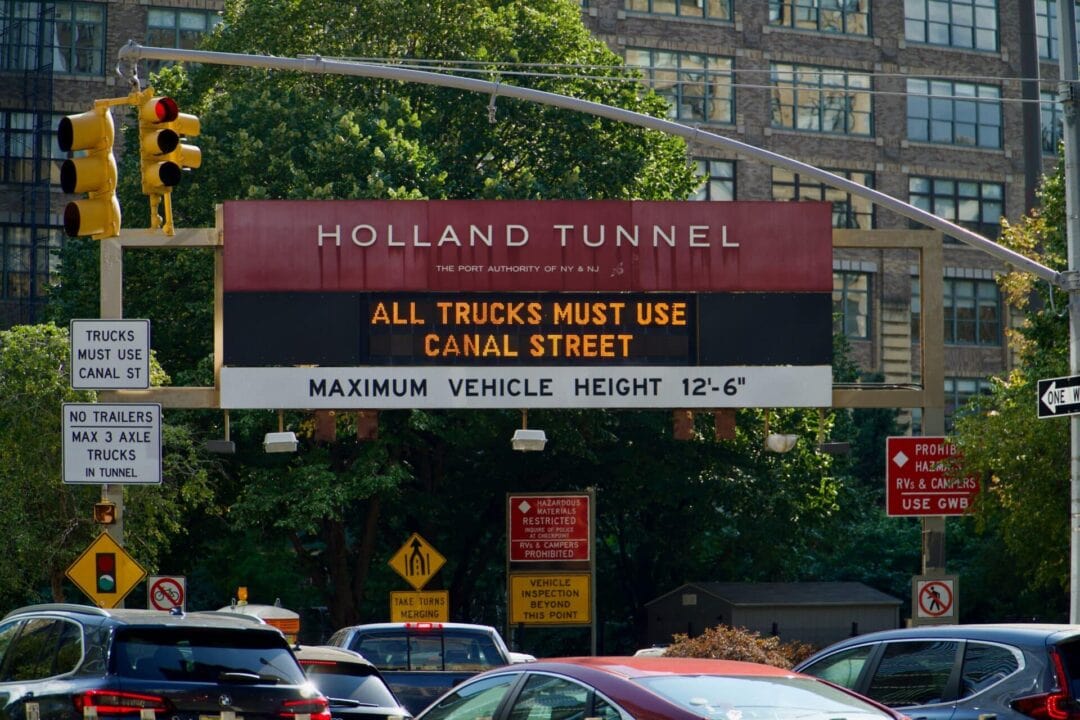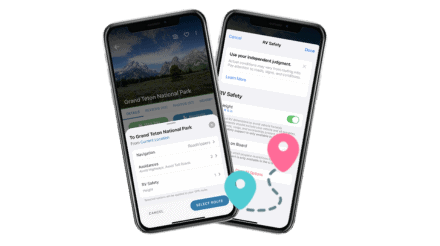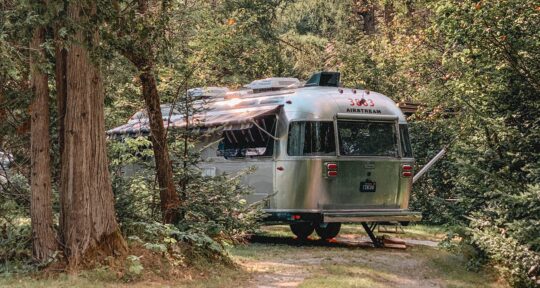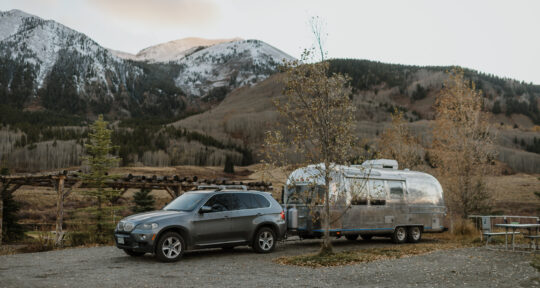Driving an RV in a city might involve white-knuckle grips and plenty of salty exclamations, but if you plan ahead, take the proper precautions, and practice often, you may soon find yourself gliding through traffic with ease.
Urban driving comes with its share of problems, due to heavy traffic and jumbled highways, and you may even encounter RV restrictions. However, you can learn how to tame this maze.
Potential problems with driving an RV in a city
Traffic is generally the main concern for drivers trying to traverse a city. Congested roadways, especially at rush hour, can add minutes or hours to your journey. Gas consumption also increases as you sit idling or deal with starts and stops. Add to that the higher cost of gas in urban areas, and you can feel the dollars flowing out of your wallet with every mile you trek through town.
Sometimes, slow traffic isn’t the problem; instead, fast traffic is. Drivers familiar with the city may leapfrog around your slow-moving vehicle. You may be maneuvering slowly and carefully, only to encounter a zippy driver moving into your space.
Aside from all of the cars that come together in a city, you’ll also face the challenge of various highways and interstates merging and splitting apart. The entanglement of roadways makes it harder to follow your proper route, especially as you deal with merging traffic.
6 steps to planning a successful RV road trip
Road restrictions are another problem you might encounter while driving an RV through a city. Urban highways tend to have more bridges, overpasses, and tunnels than their rural counterparts.
Here are some restrictions you might encounter:
Height restrictions
While the Federal Highway Administration requires interstate overpasses to have 14 feet of clearance, you are likely to find much lower heights if you veer off the highway in urban areas. Some roads, especially parkways on the East Coast, restrict oversize vehicles for this reason.
Propane restrictions
Never forget you are carrying flammable material if you are toting propane tanks. Because of that, you will encounter some restricted ferries, tunnels, and bridges. This AAA roundup provides a list of the main propane restrictions for jurisdictions across the U.S. and Canada.

Tips for navigating urban highways in an RV
Use an RV GPS: General map apps don’t take height restrictions into account. You can use Roadtrippers for RV-friendly route navigation by entering your RV’s height and whether you’re carrying propane.
Have your height handy: Look up or measure the height of your rig including the roof A/C and write it on a sticky note that is easily visible to the driver. Being able to check your height quickly is essential. Some bridges have earned nicknames like “the can opener” for their ability to cut the roofs off oversized vehicles.
Enlist a trusty navigator: Driving your RV through a city will require your full attention, making it difficult to also manage the task of navigating unfamiliar territory. Allow your copilot to give directions. Your partner can help you stay in the proper lane and give you a heads up in plenty of time to maneuver toward your exit.
Look for the outermost interstates: Instead of crossing through the center of downtown, which is often the most congested area, look for beltways or expressways that loop around a city. You may add 10 to 15 minutes of driving to your journey, but the easier driving conditions may make it worthwhile.
Watch for overhead highway signs: Have you ever noticed the small arrows at the bottom of the huge signs over the highway? These arrows tell you which lanes lead to the specified routes and exits. When relying on modern GPSs, you may be less familiar with the visual clues built in to help you manually navigate, but these are extra important if you are driving a large rig.
Avoid rush hour: On Mondays through Fridays, traffic is heaviest in the morning and early evening. If you know you’ll be passing through a particularly stress-inducing city, try to plan your journey through town before 6 a.m. or after 8 p.m. on weekdays. While these might not be your favored driving hours, you’re more likely to encounter wide-open roadways. Weekends are also usually less crowded, especially in the morning.
Take it slow: You might be hyper aware of the fact that you’re going slower than traffic, even if you’re driving the speed limit. Don’t let that bother you. Take your time. Faster cars can go around you.
Get gas and food outside of town: What’s worse than driving through a city? Pulling off to get gas and food in a congested area. Try to make your stops before you hit the edge of the city and then hold tight until you reach the other side.
When possible, confirm your route with a local: Ask your friends or trusted RV forums if your planned route looks good. Chances are, you’ll find someone more familiar with the region than you are who is more than happy to help.
When visiting a city center, park your RV outside of town and take public transit: Many cities are wholly inappropriate places to drive an RV, so save yourself the hassle. Plus, the parking options may be limited—and expensive. Instead, research parking options near outlying transit stations, and take a train, subway, or bus into the city.
Worst cities to navigate with an RV
According to the Global Traffic Scorecard, these are the five U.S. cities with the largest traffic delays, which could make them especially problematic for RVers:
- Chicago, Illinois
- New York, New York
- Philadelphia, Pennsylvania
- Boston, Massachusetts
- Miami, Florida
Which cities have the highest accident rates? According to data compiled by WalletHub, you might want to avoid these accident-prone cities while driving your RV:
- Oakland, California
- Los Angeles, California
- Boston, Massachusetts
- Washington, D.C.
- Baltimore, Maryland
Best cities to navigate with an RV
Now that you know the worst cities, let’s take a look at the best cities. Based on their low accident rates and improved traffic infrastructure, these cities might be more RV friendly:
- Boise, Idaho
- Laredo, Texas
- Madison, Wisconsin
- Colorado Springs, Colorado
- Scottsdale, Arizona
- Birmingham, Alabama
- Orlando, Florida
- Lubbock, Texas
- Irvine, California
As a general rule, cities on the East Coast and the California Coast are the most difficult to navigate, while Midwestern, Southern, and Western cities are the easiest. Brace yourself before your first urban drive in your RV. It may be stressful. But, as with most things, the more experience you gain, the easier it will become.







